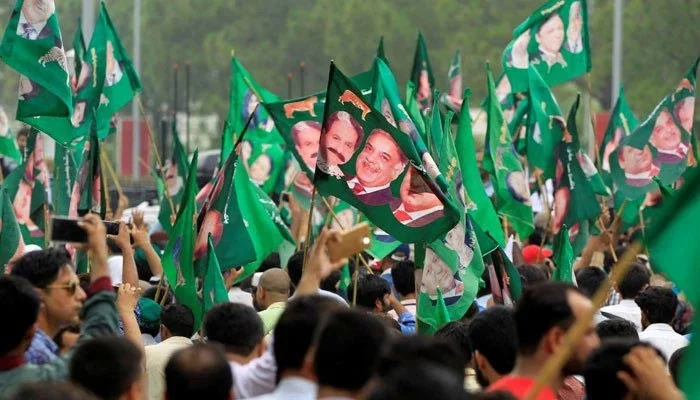ISLAMABAD: The popularity gap between Pakistan Tehreek-e-Insaf (PTI) and Pakistan Muslim League-Nawaz (PML-N) has been fast shrinking since the return of Nawaz Sharif bringing both parties now to a position they held at the time of the 2018 elections.
This is despite the fact that no campaign has been started yet for the general election, which is going to be held almost after a month. If the elections are held today with PTI even having its symbol, a recent survey suggests, there will be a tough contest as PMLN has significantly regained the lost ground contrary to the common perception prevailing in social and traditional media. Even, there will not be a smooth sailing in Khyber Pakhtunkhwa.
The PTI was 15% ahead of PMLN a week before elder Sharif landed in Lahore, a survey then conducted by Gallup Pakistan suggested. This gap has now reduced to four% , according to a fresh survey done by the same pollster between December 15 and January 7. It was face to face of a countrywide sample of 5,000 individuals. Those who said they would vote for PTI did so keeping in mind that they would vote for Bat. The above-mentioned finding regarding shrinking gap is about Punjab.
In three regions of the largest province – South, Central and West Punjab — the popularity gap is virtually non-existent as it is one to two%. As the pollsters also took into account an error margin of 2-3%, this gap is, therefore, too negligible to consider. However, PTI is 10% more popular than PML-N in the northern Punjab which largely comprises the districts falling in Rawalpindi region.
This is also called a martial belt as the majority of recruits in the army are from this region. Pollsters in general believe that soldiers, serving and retired both, largely remain faithful to their department even politically and this was also testified in a survey held a few months ago. Diaspora community from this region is considered by the pollsters as a counter-balance and hence the reason for the PTI’s edge in this region. Also, the fact remains that PTI is popular in the ranks and files as well.
As far as Punjab’s pulse is concerned, another pollster tends to agree. “The seats won by PML-N in 2018 are largely intact,” said Tariq Junaid, the executive director of the Institute of Public Opinion Research (IPOR).
His organisation is presently engaged with the PML-N for conducting surveys of different constituencies in order to decide the best candidates for elections. In Lahore and Gujranwala divisions, the party will likely retain the seats it won in 2018, he said, explaining ground situation at present. The IPOR’s teams are deployed in different regions for the survey purpose.
Tariq said his team didn’t find PTI banners anywhere during the course of the survey due to fear and other factors the party is confronting these days with the top leadership in jail. That may also affect their decision to show-up on election day. After Benazir Bhutto’s murder, a little more than 50% said they would vote for the PPP and on the election day, the number fell to 35%, he said.
Bilal Gilani, the executive director of Gallup Pakistan also agrees that the PTI has been facing certain handicaps in the prevailing situation and that may have effects on the morale of its voters on the election day. Keeping that in view, he said, the little popularity edges the PTI has right now might not translate into victory especially when there is still a month in the elections. In 2018, he said, both parties almost bagged a similar number of votes in terms of aggregate. The dent was created by including the electables from South Punjab.
Unlike the common perception, the PTI is not as popular as it appears in the media, according to the pollsters. In 2018, PTI had 38% vote from the KP and the remaining 62% went to the other parties. Although PTI has now gained, it is not more than 5% which means electoral alliances there can land the PTI in a challenging situation. An alliance between PML-N and JUI-F in Hazara region and in South KP can put up a tough fight to PTI as Nawaz Sharif and Fazlul Rehman are popular in those regions.
Likewise, Bilal explained, a PPP and ANP alliance in Malakand Division can be detrimental to PTI there. Contrary to Punjab, the vote in KP is split among more than three parties as other than PTI, ANP, JUIF, PPP and PML-N are having their strong support pockets.
In Punjab, PML-N, PTI and Tehreek-e-Labbaik Pakistan are three parties having support of more than 5% in each case. In Karachi, PTI is having a slight edge but an MQM and PML-N alliance can create difficulties for it, Bilal said. In interior Sindh, the PPP has retained its support base.

